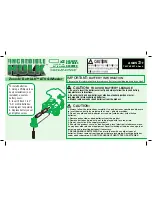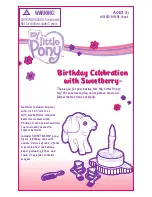
SAFETY INFORMATION
11
– Engine exhaust contains carbon
monoxide (CO), which can cause in-
jury or death if inhaled in sufficient
quantities. Do not operate the craft
in a confined area or allow CO to ac-
cumulate in or around the craft, or
in enclosed or sheltered areas.
– Combustion engines need air to op-
erate; consequently this craft can
not be totally watertight. Any ma-
neuvers such as
figure eights
that
cause the upper deck to be under
water may cause severe engine
problems due to water ingestion.
Refer to the SPECIAL PROCE-
DURES and LIMITED WARRANTY
sections contained in this
Opera-
tor’s Guide
.
– Respect no wake zones, the rights
of other water users and the envi-
ronment. As the “skipper” and
owner of a boat, you are responsi-
ble for damage to other boats
caused by the wake of your craft.
Do not let anyone throw refuse
overboard.
– Between sunset and sunrise, use
the sport boat's navigation lights
and reduce speed. Do not operate
the boat in reduced visibility.
– Do not add accessories or equipment
that may adversely affect visibility or
alter control of the sport boat.
– The skipper should personally take
the helm during storms.
Before Getting Underway...
– Always perform the pre-operation
checks as specified in this
Opera-
tor’s Guide
.
– Do not exceed the payload or pas-
senger capacities for this sport
boat, which are listed on the capac-
ity plate and in the specifications.
Overloading can affect maneuver-
ability, stability and performance.
Also, heavy seas reduce capacity. A
payload or person capacity plate is
not an excuse for failure to use com-
mon sense or good judgment.
– Regularly inspect the boat, the hull,
engine, safety equipment, and all
other boating gear and keep them in
safe operating condition.
– Be sure you have the minimum re-
quired safety equipment, PFDs and
any additional gear needed for your
cruise.
– Check that all lifesaving equipment,
including fire extinguisher, is in safe
operating condition and easily acces-
sible. Show all passengers where
this equipment is, and make sure
they know how to use it.
– Keep an eye on the weather. Check
local weather broadcasts before de-
parture. Be alert to changing condi-
tions.
– Keep accurate and up-to-date charts
of the boating area on board. Before
getting underway, check water con-
ditions in the planned boating area.
– Before departure, file a Float Plan
with a responsible person ashore.
– Keep enough fuel on board for the
planned trip. Always verify fuel level
before use and during the ride. Ap-
ply the principle of 1/3 of the fuel to
reach your destination, 1/3 to re-
turn, and keep 1/3 in reserve. Allow
for changes due to adverse weather
or other delays.
lmo2004-002b_2_of_3_safety_information.fm Page 11 Wednesday, May 14, 2003 11:57 AM
Содержание SeaDoo Speedster 200
Страница 1: ......
Страница 29: ...29 VEHICLE INFORMATION lmo2004_002a book Page 29 Wednesday May 14 2003 11 10 AM...
Страница 72: ...73 MAINTENANCE INFORMATION lmo2004_002a book Page 73 Wednesday May 14 2003 11 10 AM...
Страница 92: ...93 WARRANTY lmo2004_002a book Page 93 Wednesday May 14 2003 11 10 AM...
Страница 113: ......













































